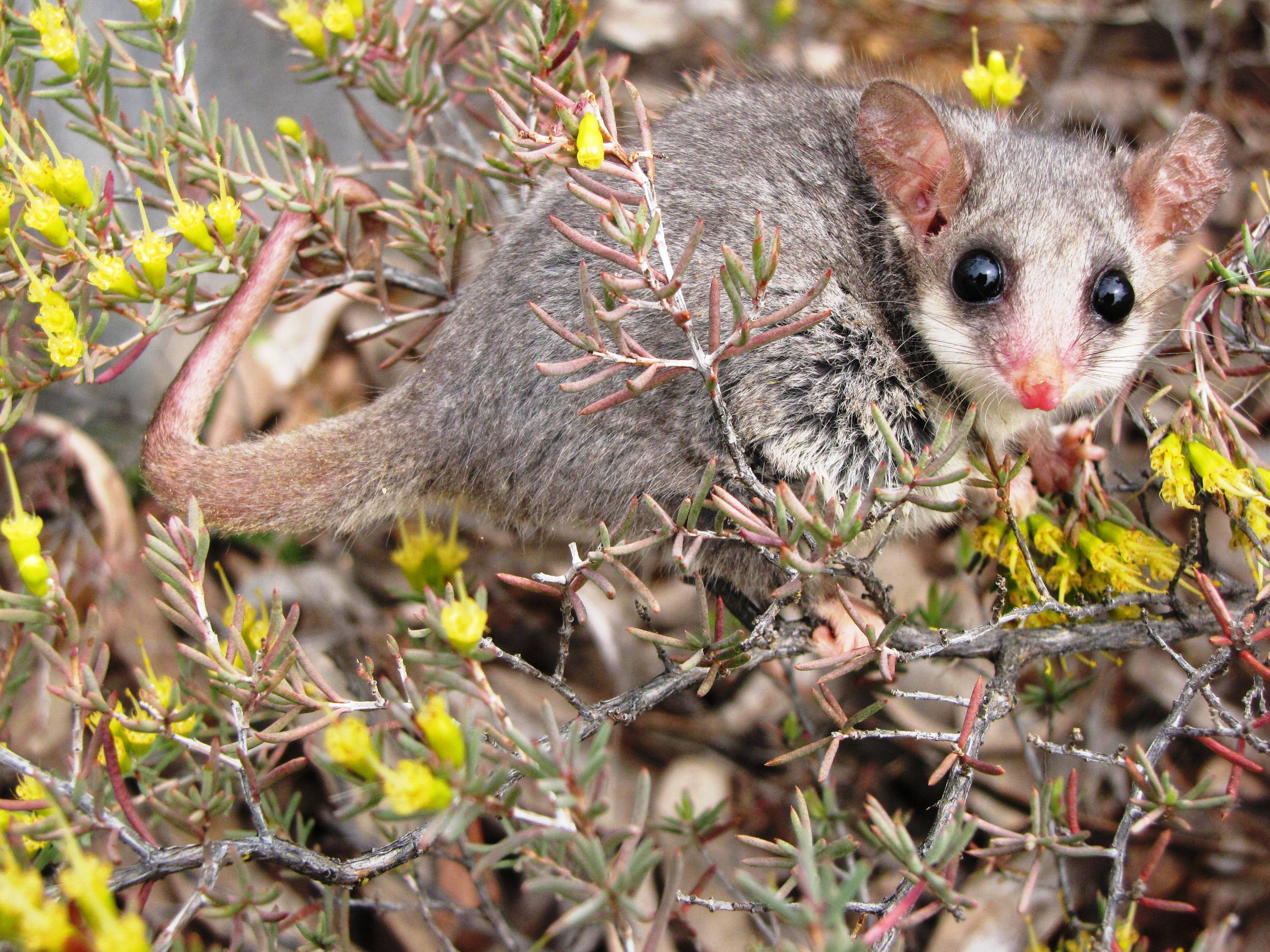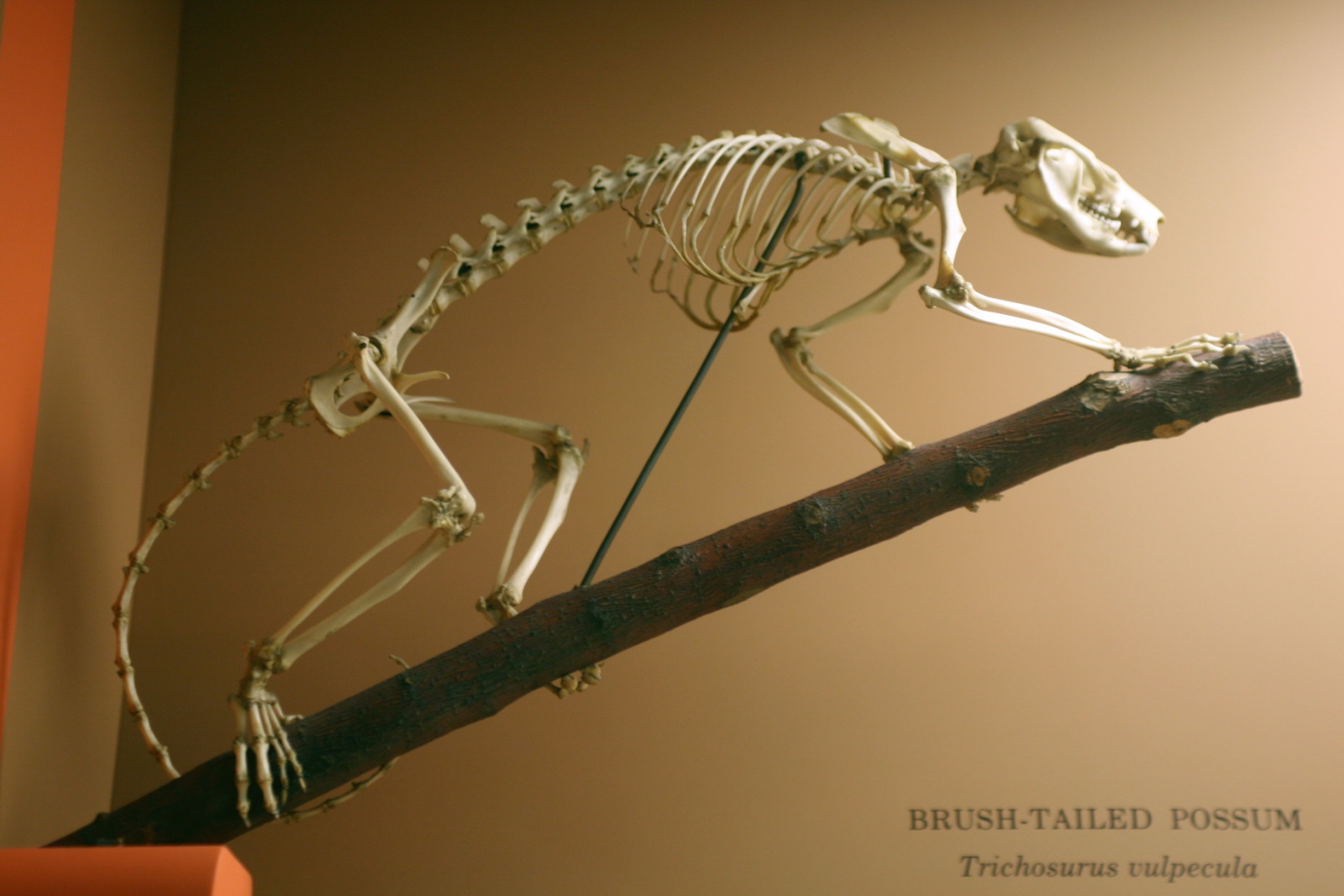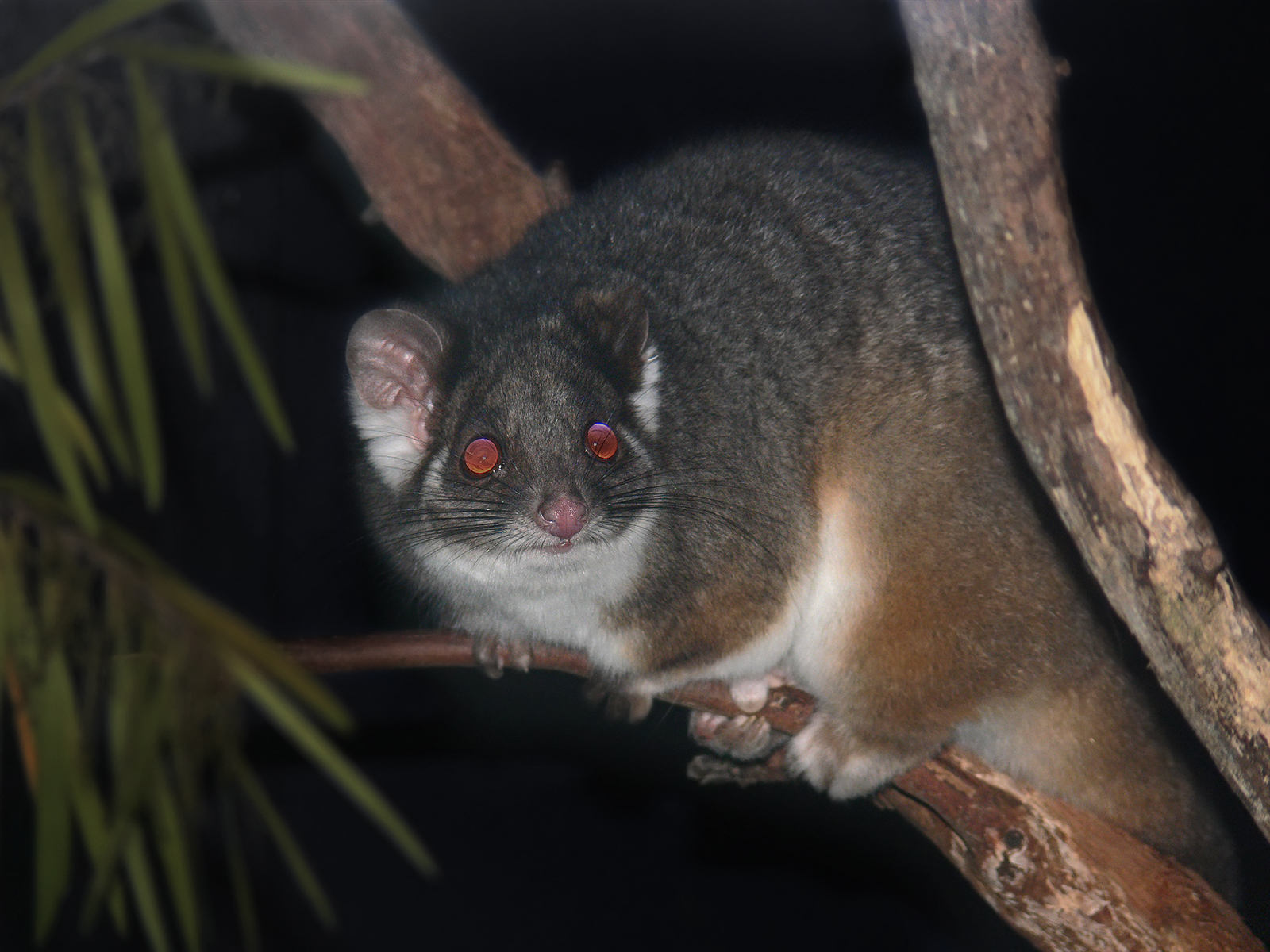|
Phalangeriformes
Phalangeriformes is a paraphyletic suborder of about 70 species of small to medium-sized arboreal marsupials native to Australia, New Guinea, and Sulawesi. The species are commonly known as possums, gliders, and cuscus. The common name "possum" for various Phalangeriformes species derives from the creatures' resemblance to the opossums of the Americas (the term comes from Powhatan language ''aposoum'' "white animal", from Proto-Algonquian *''wa·p-aʔɬemwa'' "white dog"). However, although opossums are also marsupials, Australasian possums are more closely related to other Australasian marsupials such as kangaroos. Phalangeriformes are quadrupedal diprotodont marsupials with long tails. The smallest species, indeed the smallest diprotodont marsupial, is the Tasmanian pygmy possum, with an adult head-body length of and a weight of . The largest are the two species of bear cuscus, which may exceed . Phalangeriformes species are typically nocturnal and at least partia ... [...More Info...] [...Related Items...] OR: [Wikipedia] [Google] [Baidu] |
Diprotodontia
Diprotodontia (, from Greek "two forward teeth") is the largest extant order of marsupials, with about 155 species, including the kangaroos, wallabies, possums, koala, wombats, and many others. Extinct diprotodonts include the hippopotamus-sized ''Diprotodon'', and ''Thylacoleo'', the so-called "marsupial lion". Characteristics Living diprotodonts are almost all herbivores, as were most of those that are now extinct. A few insectivorous and omnivorous diprotodonts are known, and the Potoridae are almost unique among vertebrates in being largely fungivorous, but these seem to have arisen as relatively recent adaptations from the mainstream herbivorous lifestyle. The extinct thylacoleonids ("marsupial lions") are the only known group to have exhibited carnivory on a large scale. Diprotodonts are restricted to Australasia. The earliest known fossils date to the late Oligocene, but their genesis certainly lies earlier than this, as large gaps occur in Australia's fossil record, wi ... [...More Info...] [...Related Items...] OR: [Wikipedia] [Google] [Baidu] |
Opossum
Opossums () are members of the marsupial order Didelphimorphia () endemic to the Americas. The largest order of marsupials in the Western Hemisphere, it comprises 93 species in 18 genera. Opossums originated in South America and entered North America in the Great American Interchange following the connection of North and South America. The Virginia opossum is the only species found in the United States and Canada. It is often simply referred to as an opossum, and in North America it is commonly referred to as a possum (; sometimes rendered as ''possum'' in written form to indicate the dropped "o"). Possums should not be confused with the Australasian arboreal marsupials of suborder Phalangeriformes that are also called possums because of their resemblance to the Didelphimorphia. The opossum is typically a nonaggressive animal. Etymology The word ''opossum'' is borrowed from the Powhatan language and was first recorded between 1607 and 1611 by John Smith (as ''opassom'') ... [...More Info...] [...Related Items...] OR: [Wikipedia] [Google] [Baidu] |
Common Brushtail Possum
The common brushtail possum (''Trichosurus vulpecula'', from the Greek for "furry tailed" and the Latin for "little fox", previously in the genus ''Phalangista'') is a nocturnal, semi arboreal marsupial of the family Phalangeridae, native to Australia and naturalised in New Zealand, and the second-largest of the possums. Like most possums, the common brushtail possum is nocturnal. It is mainly a folivore, but has been known to eat small mammals such as rats. In most Australian habitats, eucalyptus leaves are a significant part of the diet, but rarely the sole item eaten. Its tail is prehensile and naked on its lower underside. The four colour variations are silver-grey, brown, black, and gold. It is the Australian marsupial most often seen by city dwellers, as it is one of few that thrive in cities and a wide range of natural and human-modified environments. Around human habitations, common brushtails are inventive and determined foragers with a liking for fruit trees, veget ... [...More Info...] [...Related Items...] OR: [Wikipedia] [Google] [Baidu] |
Phalangeridae
The Phalangeridae are a family of mostly nocturnal marsupials native to Australia, New Guinea, and Eastern Indonesia, including the cuscuses, brushtail possums, and their close relatives. Considered a type of possum, most species are arboreal, and they inhabit a wide range of forest habitats from alpine woodland to eucalypt forest and tropical jungle. Many species have been introduced to various non-native habitats by humans for thousands of years. Characteristics Phalangerids are relatively large, compared with other possums. The smallest species, the Sulawesi dwarf cuscus, is cat-sized, averaging in length, while the largest, the black-spotted cuscus, is around long, and weighs . Besides the large size, other key features distinguishing phalangerids from other possums include the presence of bare skin on at least part of the tail, and low-crowned molar teeth. They have claws on the fore feet, but none on the hind feet, although these do have an opposable first toe to he ... [...More Info...] [...Related Items...] OR: [Wikipedia] [Google] [Baidu] |
Marsupial
Marsupials are any members of the mammalian infraclass Marsupialia. All extant marsupials are endemic to Australasia, Wallacea and the Americas. A distinctive characteristic common to most of these species is that the young are carried in a pouch. Marsupials include opossums, Tasmanian devils, kangaroos, koalas, wombats, wallabies, bandicoots, and the extinct thylacine. Marsupials represent the clade originating from the last common ancestor of extant metatherians, the group containing all mammals more closely related to marsupials than to placentals. They give birth to relatively undeveloped young that often reside in a pouch located on their mothers' abdomen for a certain amount of time. Close to 70% of the 334 extant species occur on the Australian continent (the mainland, Tasmania, New Guinea and nearby islands). The remaining 30% are found in the Americas—primarily in South America, thirteen in Central America, and one species, the Virginia opossum, in Nort ... [...More Info...] [...Related Items...] OR: [Wikipedia] [Google] [Baidu] |
Tasmanian Pygmy Possum
The Tasmanian pygmy possum (''Cercartetus lepidus''), also known as the little pygmy possum or tiny pygmy possum, is the world's smallest possum. It was first described by Oldfield Thomas in 1888, after he identified that a museum specimen labelled as an eastern pygmy possum in fact represented a species then unknown to science. The holotype resides in the Natural History Museum in London. Description Although it is a marsupial, the Tasmanian pygmy possum superficially resembles a dormouse, and it is the smallest of all the known species of possum. Adults range from in head-body length, with a tail, and weigh just . Their fur is soft and thick, and is fawn in colour over most of the body, fading to a pale grey on the underparts. The snout is short with long whiskers, and the eyes are directed forwards and surrounded by slightly darker fur, although without the conspicuous black rings seen on other pygmy possums. The ears are mobile and largely hairless. The tail is prehensile ... [...More Info...] [...Related Items...] OR: [Wikipedia] [Google] [Baidu] |
New Guinea
New Guinea (; Hiri Motu: ''Niu Gini''; id, Papua, or , historically ) is the world's second-largest island with an area of . Located in Oceania in the southwestern Pacific Ocean, the island is separated from Australia by the wide Torres Strait, though both landmasses lie on the same continental shelf. Numerous smaller islands are located to the west and east. The eastern half of the island is the major land mass of the independent state of Papua New Guinea. The western half, known as Western New Guinea, forms a part of Indonesia and is organized as the provinces of Papua, Central Papua, Highland Papua, South Papua, Southwest Papua, and West Papua. The largest cities on the island are Jayapura (capital of Papua, Indonesia) and Port Moresby (capital of Papua New Guinea). Names The island has been known by various names: The name ''Papua'' was used to refer to parts of the island before contact with the West. Its etymology is unclear; one theory states that ... [...More Info...] [...Related Items...] OR: [Wikipedia] [Google] [Baidu] |
Burramyidae
The pygmy possums are a family of small possums that together form the marsupial family Burramyidae. The five extant species of pygmy possum are grouped into two genera. Four of the species are endemic to Australia, with one species also co-occurring in Papua New Guinea and Indonesia. Pygmy possums range in length from about , and usually weigh between . They are nocturnal and omnivorous, living on a diet of invertebrates, fruit, seed, nectar and pollen. They are excellent climbers, due in part to their prehensile tails. Although they cannot glide like some possums, some species can leap long distances. They have a prehensile tail for grabbing branches, but spend most of their time on the ground. Conservation International (CI) and the Indonesian Institute of Sciences (LIPI) reported the possible discovery of a new species of ''Cercartetus'' pygmy possum upon visit to the Foja Mountains in June 2007. The mountain pygmy possum is the only mammal restricted to the alpine and ... [...More Info...] [...Related Items...] OR: [Wikipedia] [Google] [Baidu] |
Petauroidea
Petauroidea is a superfamily of marsupials from Australia and New Guinea. It is part of the suborder Phalangeriformes within the order Diprotodontia, which also includes, among others, wombats, kangaroos, cuscuses. The superfamily Phalangeroidea, including cuscuses and brushtail possums (family Phalangeridae) and pygmy possums (family Burramyidae), is the immediate sister group of the Petauroidea. The superfamily includes the following recent species: *Superfamily Petauroidea ** Family Pseudocheiridae *** Subfamily Hemibelideinae **** Genus '' Hemibelideus'' ***** Lemur-like ringtail possum, ''Hemibelideus lemuroides'' **** Genus '' Petauroides'' ***** Central greater glider, ''Petauroides armillatus'' ***** Northern greater glider, ''Petauroides minor'' ***** Southern greater glider, ''Petauroides volans'' *** Subfamily Pseudocheirinae **** Genus '' Petropseudes'' ***** Rock-haunting ringtail possum, ''Petropseudes dahli'' **** Genus ''Pseudocheirus'' ***** Common rin ... [...More Info...] [...Related Items...] OR: [Wikipedia] [Google] [Baidu] |
Pseudocheiridae
Pseudocheiridae is a family of arboreal marsupials containing 17 extant species of ringtailed possums and close relatives. They are found in forested areas and shrublands throughout Australia and New Guinea. Characteristics Physically, they appear very similar to the pygmy possums, except for their greater size. Even so, they are relatively small animals, with the largest being cat-sized, and they weigh between 200 grams and 2 kilograms. They have grasping hands and feet with opposable first toes on their hindfeet, and, in all species save the greater glider, a prehensile tail. They are nocturnal, with large eyes. All species feed almost entirely on leaves. To enable them to digest this tough and fibrous food, they have an enlarged cecum containing fermenting bacteria, and, like rabbits, they are coprophagous, passing food through their digestive tracts twice. Their teeth include a battery of grinding molars, and they lack lower canines. Their dental formula is: Most ar ... [...More Info...] [...Related Items...] OR: [Wikipedia] [Google] [Baidu] |
Petauridae
Petauridae is a family of possums containing 13 species: four species of trioks and striped possum (genus ''Dactylopsila''), eight species of wrist-winged glider (genus ''Petaurus''), and Leadbeater's possum (''Gymnobelideus leadbeateri''), which has only vestigial gliding membranes. Most of the wrist-winged gliders are native to Australia, whereas most of the striped possums to New Guinea, but some members of each group are found on both sides of the Torres Strait. Leadbeater's possum is endemic to Victoria, Australia. Evolution All petaurids have obvious facial markings, a well-defined dorsal stripe, very large lower front incisors, and four-cusped molars. Despite their distinctive appearance, petaurids are closely related to the ringtail possums (family Pseudocheiridae) and are grouped together with them to form the superfamily Petauroidea. The wrist-winged gliders are omnivorous, specialising on sap and nectar, but taking a wide variety of supplemental foods. The gliders ... [...More Info...] [...Related Items...] OR: [Wikipedia] [Google] [Baidu] |
Australidelphia
Australidelphia is the superorder that contains roughly three-quarters of all marsupials, including all those native to Australasia and a single species — the monito del monte — from South America. All other American marsupials are members of the Ameridelphia. Analysis of retrotransposon insertion sites in the nuclear DNA of a variety of marsupials has shown that the South American monito del monte's lineage is the most basal of the superorder. The Australian australidelphians form a clade, for which the name Euaustralidelphia ("true Australidelphia") has been proposed (the branching order within this group is yet to be determined). The study also showed that the most basal of all marsupial orders are the other two South American groups ( Didelphimorphia and Paucituberculata, with the former probably branching first). This indicates that Australidelphia arose in South America along with the other major divisions of extant marsupials, and likely reached Australia via Antar ... [...More Info...] [...Related Items...] OR: [Wikipedia] [Google] [Baidu] |



_(white_background).jpg)

